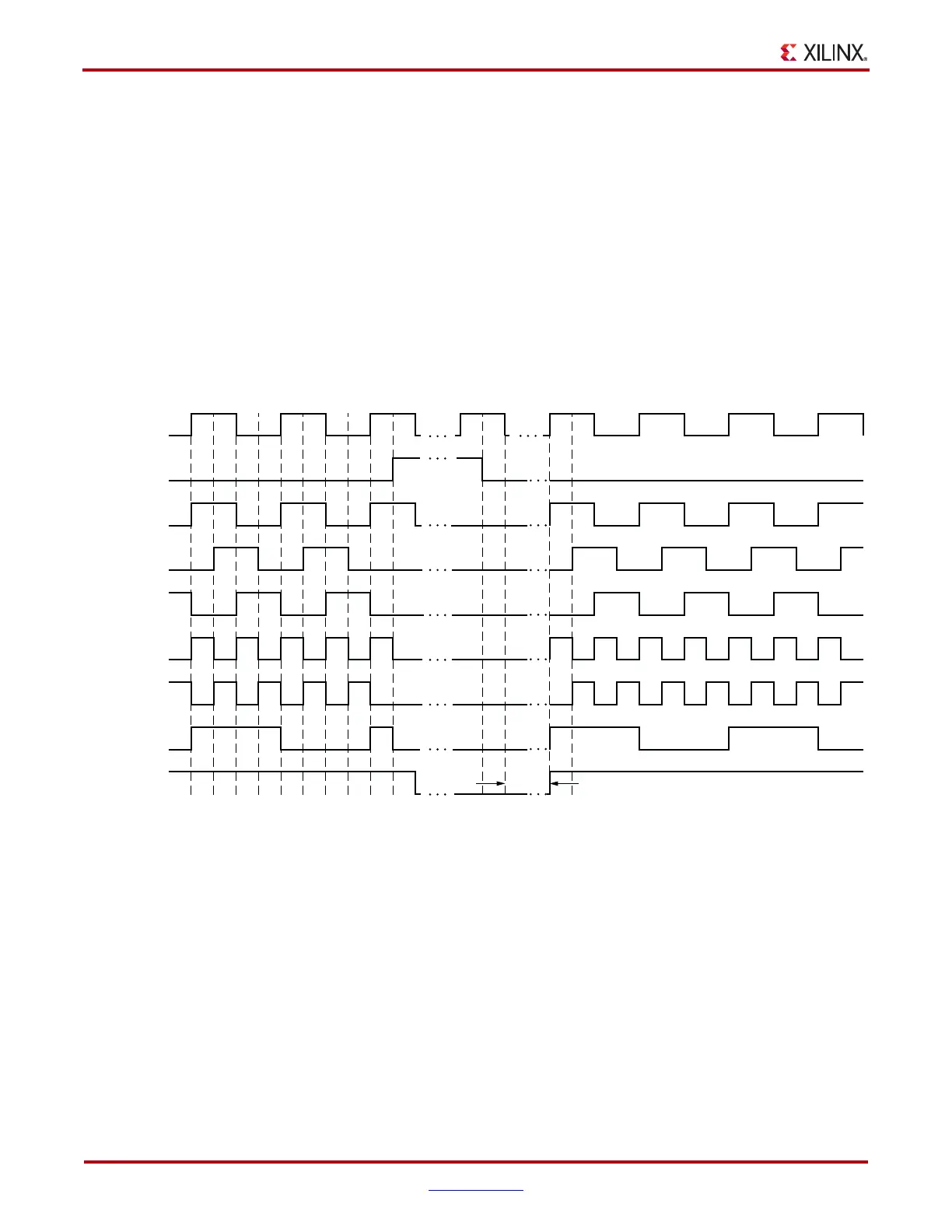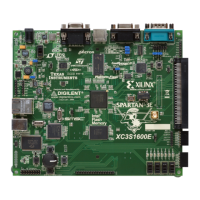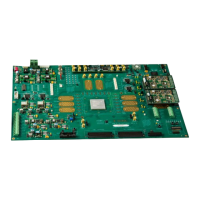84 www.xilinx.com Virtex-5 FPGA User Guide
UG190 (v5.0) June 19, 2009
Chapter 2: Clock Management Technology
DCM Timing Models
The following timing diagrams describe the behavior of the DCM clock outputs under four
different conditions:
1. Reset/Lock
2. Fixed-Phase Shifting
3. Variable-Phase Shifting
4. Status Flags
Reset/Lock
In Figure 2-17, the DCM is already locked. After the reset signal is applied, all output
clocks are stabilized to the desired values, and the LOCKED signal is asserted.
• Prior to Clock Event 1
Prior to clock event 1, the DCM is locked. All clock outputs are in phase with the
correct frequency and behavior.
• Clock Event 1
Some time after clock event 1 the reset signal is asserted at the (RST) pin. While reset is
asserted, all clock outputs become a logic zero. The reset signal is an asynchronous
reset. Note: the diagram is not shown to scale. For the DCM to operate properly, the
reset signal must be asserted for at least three CLKIN periods.
• Clock Event 2
Clock event 2 occurs a few cycles after reset is asserted and deasserted. At clock event
2, the lock process begins. At time LOCK_DLL, after clock event 2, if no fixed phase
shift was selected then all clock outputs are stable and in phase. LOCKED is also
asserted to signal completion.
X-Ref Target - Figure 2-17
Figure 2-17: RESET/LOCK Example
CLKIN
RST
CLK0
CLK90
CLK180
CLKFX
CLKFX180
CLKDV
LOCKED
1 2
3 Periods
LOCK
DLL
ug190_2_18_042406

